Home decorators be warned: One scroll through the photos of Alex Bates’s Fire Island cottage, and you might be overcome with the urge to copy everything. We don’t blame you, we experienced the exact same “my house sucks I want this house” feeling. Lucky for us, getting the look is possible thanks to the design maven’s newly launched business, Bloomist — soulful, sustainable objects that add instant beauty to any space, all with that unmistakable Alex Bates look.
One read through Alex’s interview answers, and you’ll learn quickly that so much of what makes this home magical — aside from its design — is its location. Just an hour and a half from Manhattan, Fire Island is an inspiring, ideal escape from city life (you had us at no cars.) Not only do we want this house, but we want it on this island, specifically.
originally featured on The Maryn
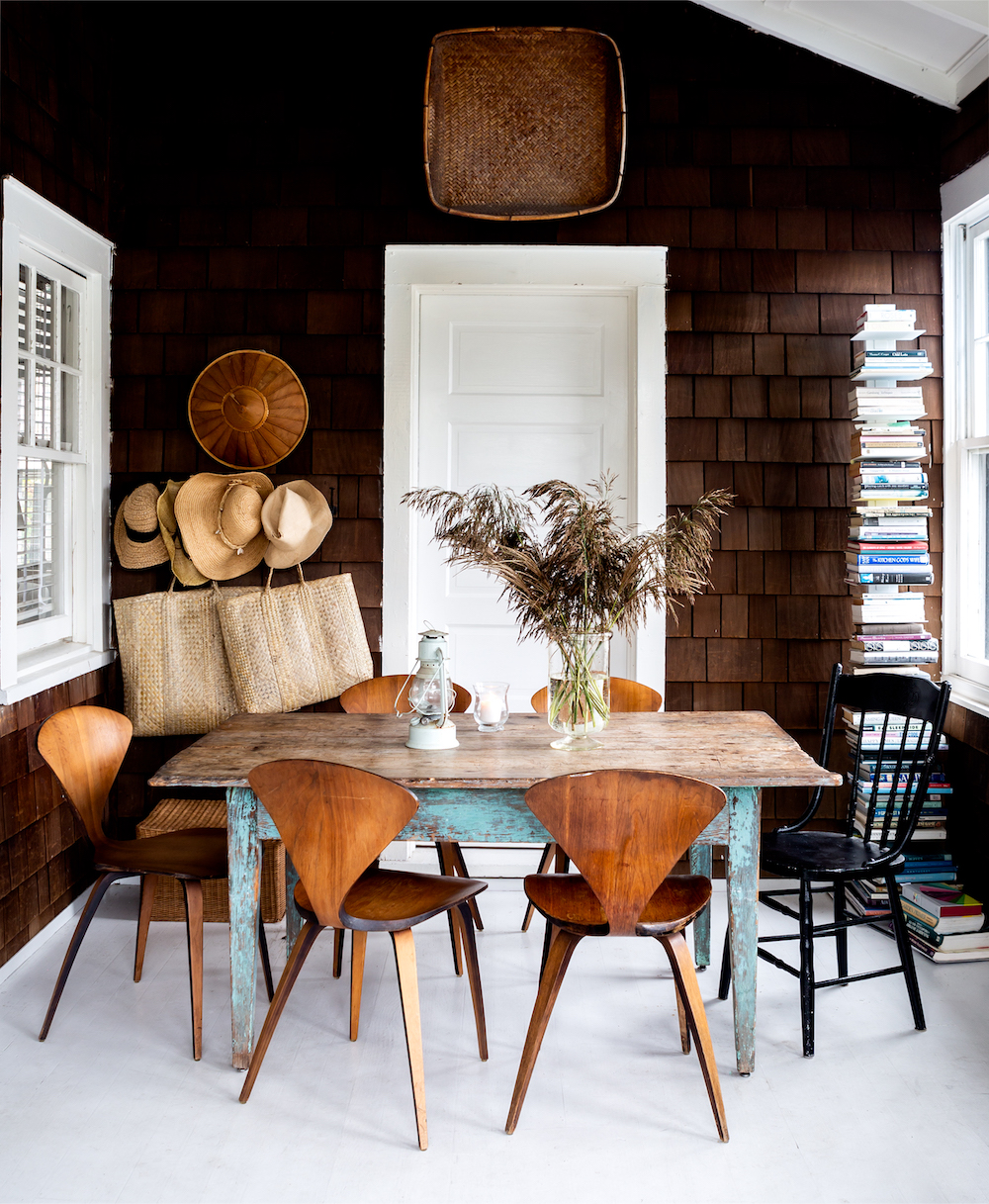
Tell us about your Fire Island home. Why this house, and why here?
We bought this house many years ago when the kids were little, probably 25+ years ago. It is located in Saltaire, one of the second incorporated villages of Fire Island. Saltaire was started in 1910 by the Fire Island Beach Corporate and incorporated in 1917. Our house was built in 1911 — a simple cedar shingle cottage, one of the early houses built by the company’s head carpenter, Mike Coffey. He built 100 in his lifetime and today the remaining Coffey houses are valued for his distinct Coffey features of batten walls, brick fireplaces, old multi-paned windows. In an old sales brochure they were described as,
“These houses are awash in daylight. The rooms may be small but the windows are big and numerous. A spectrum of sizes and surfaces provide dynamic patterns of shadows and textures which enrich the space.”
It’s an hour and a half drive from the city and the living is very simple – no cars, no formalities, you ride bikes everywhere on wooden boardwalks. Friends just drop in spontaneously and kids have incredible independence, such a stark contrast from our city life, a nature fix and our antidote to NYC. When they were little, the kids would run out the door in the morning and be home in time for dinner. We live life at a much different pace here – you feel the difference as soon as you step on the ferry – stress just slips off your shoulders.
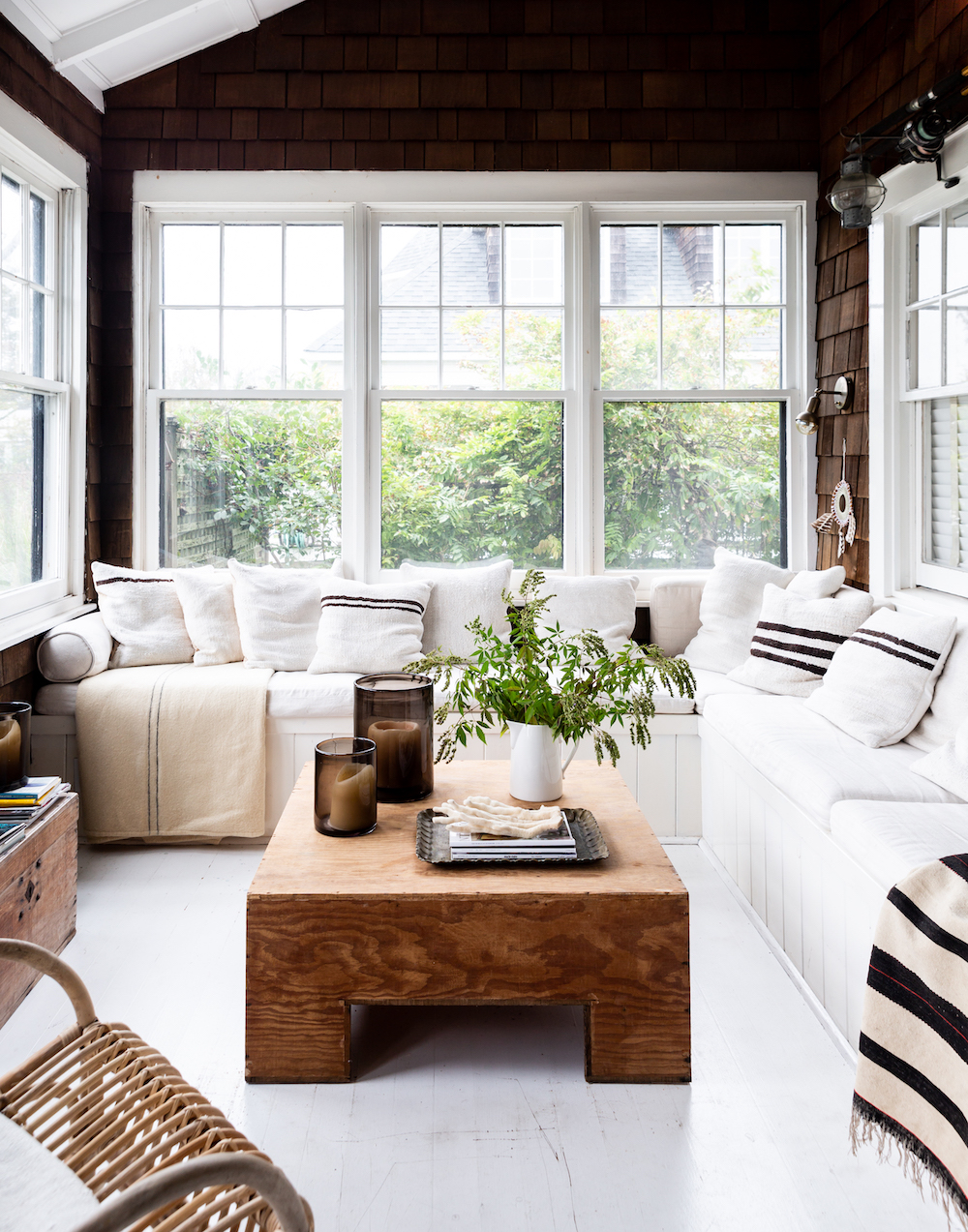
The decor of this house strikes the perfect balance of bright and airy, with cozy and charming. What was the design inspiration for it?
We wanted to respect the bones and spirit of the 1911 period without being preservationist, so we kept it really simple. Fire Island was hit hard by Hurricane Sandy and we had to gut the interiors down to the studs. In re- building we did restore all the original wall details (spaced out batten, etc.) but we put in a completely new kitchen and bath. We used a simple shaker profile for the cabinets and added tongue + groove paneling in unexpected places to look as though it was original to the house, but our marble counters are a dramatic 2 1/2 thick with a clean knife edge to give it a modern note and prevent it from going too “ye olde” .
Ye olde it certainly is not! What’s your favorite spot in the house?
Its hard to say, for such a small house there are so many places that make me happy – the light tracks through there in such incredible ways – the kitchen door to the garden faces due east – when the sun rises low in the sky, the first beams come pouring through the door. It’s such a sweet way to start my day, fixing a quiet cup of coffee early in the morning before anyone is up and watching the light shift from pale pinks to warmer yellows – I will sit there and watch it bounce around the room with the dancing shadows of the trees or go out in the garden and just take it all in. And the same thing happens at the end of the day, in reverse order, on the western side of the house. The shadows are long at the cocktail hour on the front screen porch, the light fades to dramatic pink and comes pouring through the front of house.
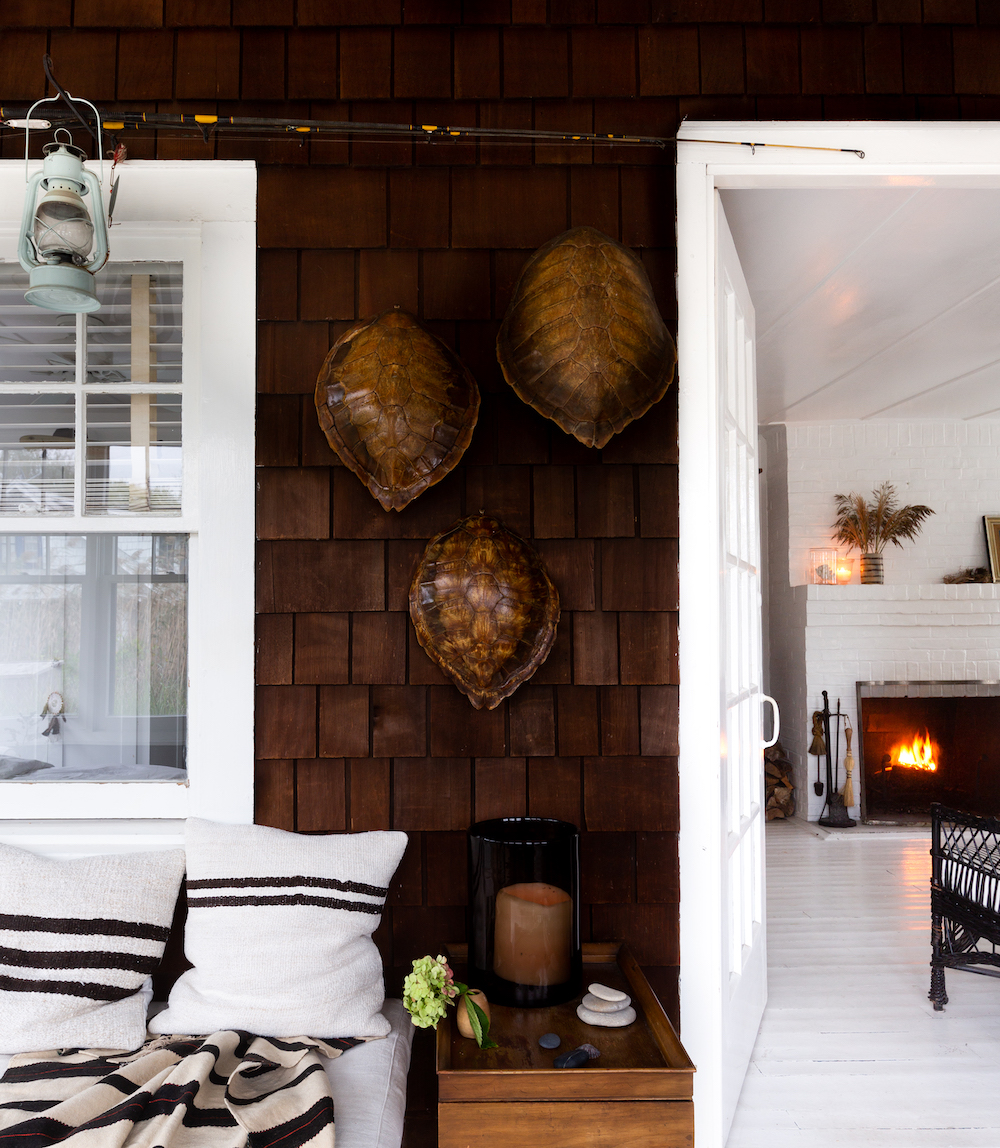
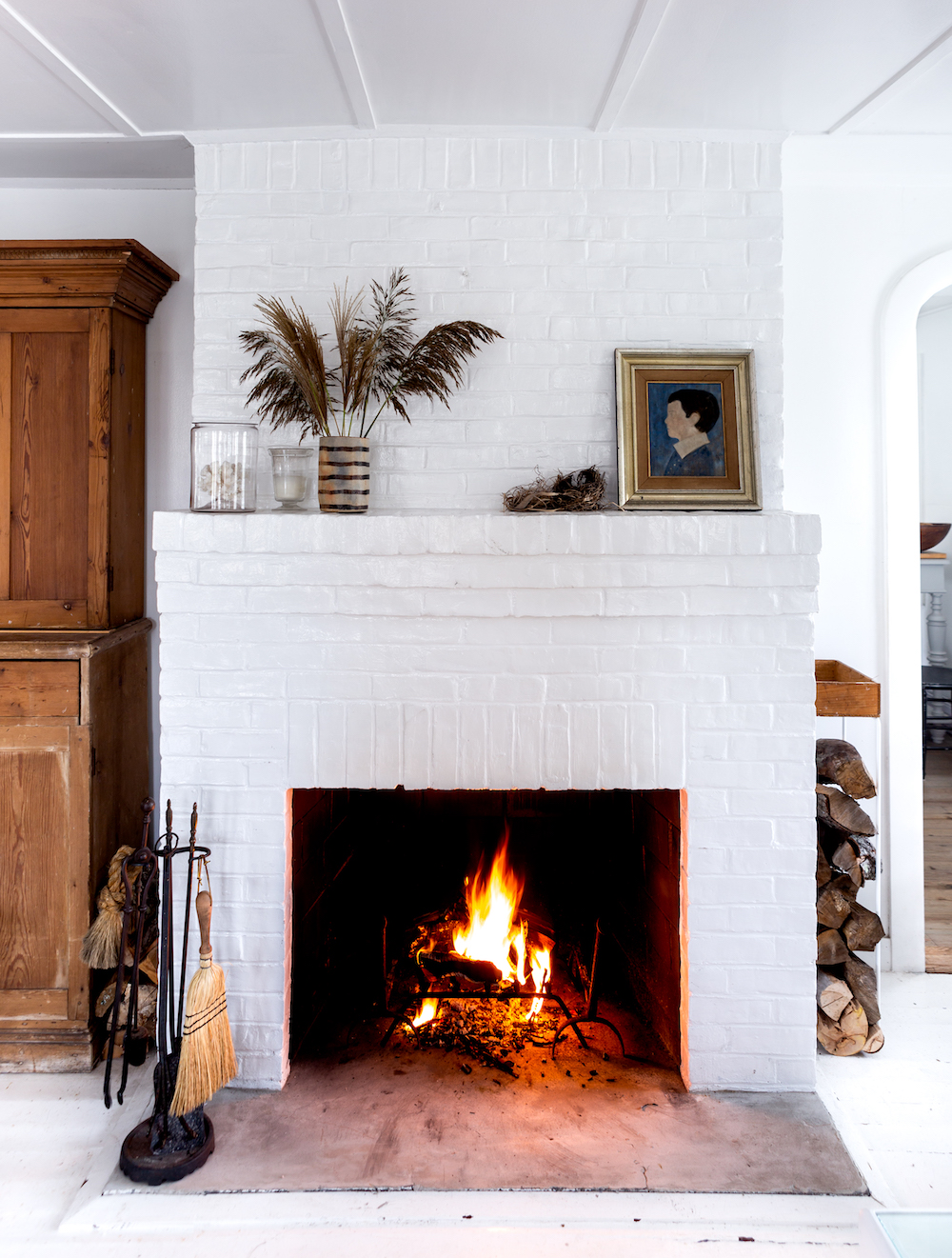
Looking at your home, it seems you had a clear vision throughout the entire decorating process. What’s your number one interior design tip to someone embarking on a similar project?
When it doubt, paint it white. We painted every surface — walls, floors and ceilings — with hi-gloss Fine Paints of Europe 0001 White. It is like pure Titanium white out of a painters tube, the purest white you will find on the market without any tints. The light dances and reflects off of every surface – the inspiration was shiny marine paints you see on a boat. Incredibly durable and surprisingly easy to live with – and all our furniture is slipcovered in white linen that easily go into the wash.
How would you describe your interiors style?
Eclectic and personal, collected not decorate. At the beach, it’s cozy minimalism with natural bits throughout the house, collections of beach stones, drift wood or fallen bird’s nests. But the city is a whole other story; too many layers of paintings and antiques from my family and travels. I am trying to pare back there but it’s a hard battle to fight my inner magpie collector tendencies.
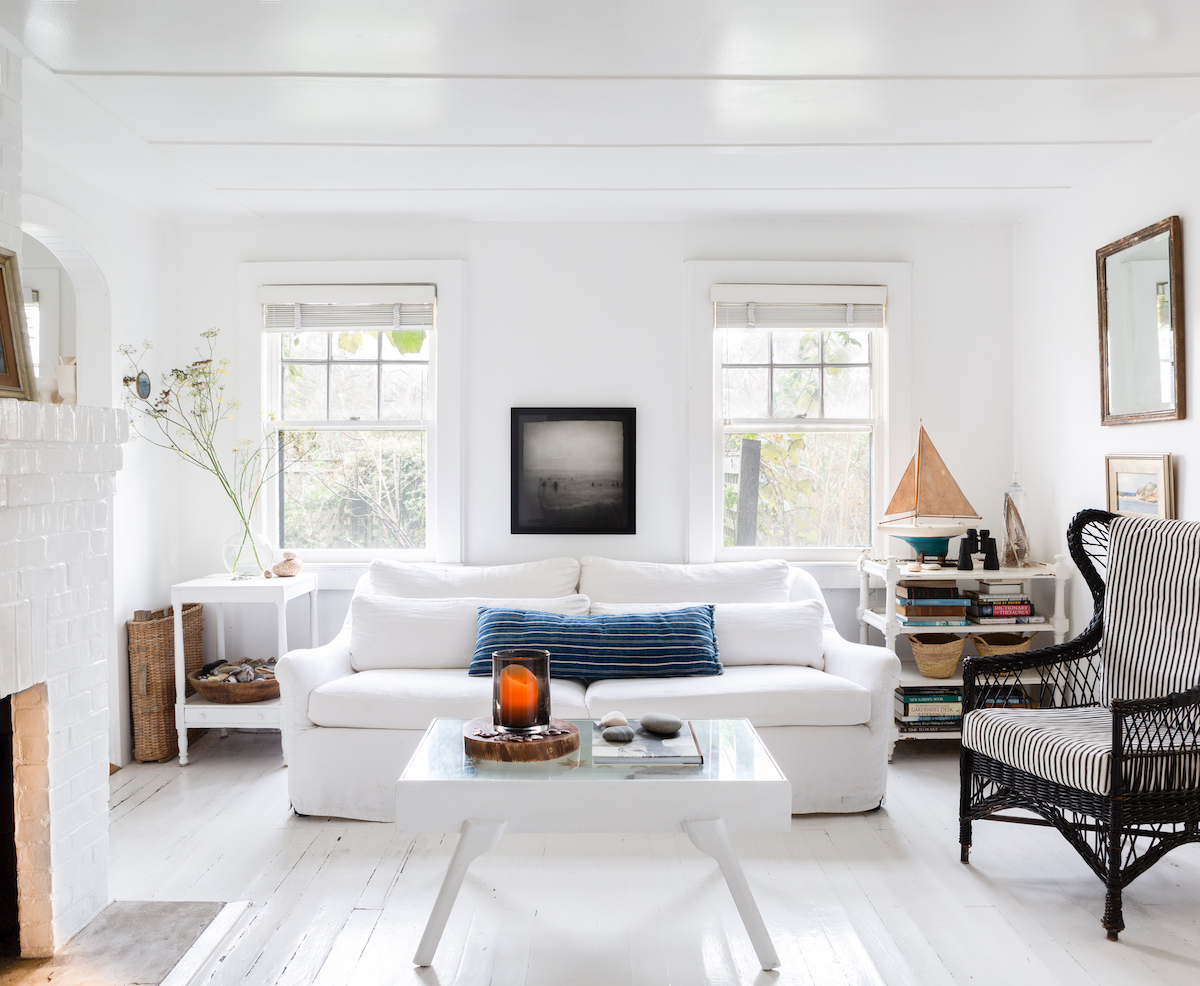
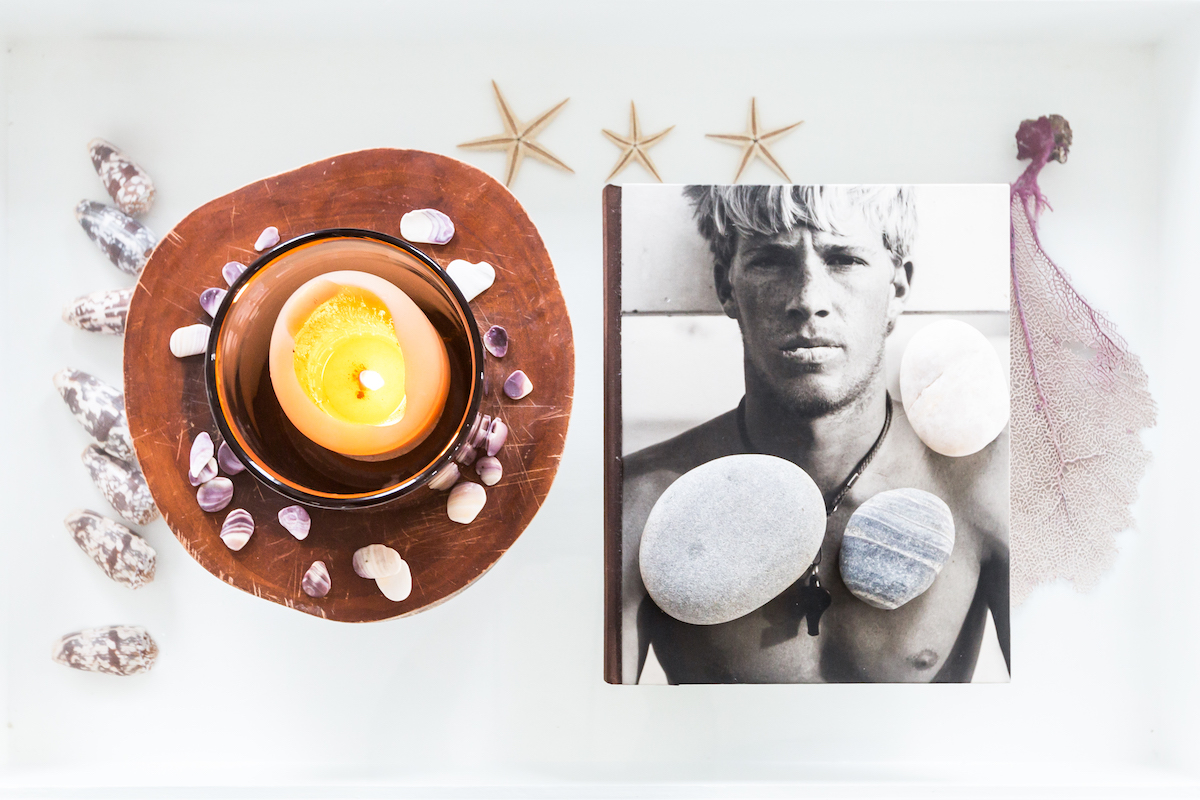
We’re all dying to know: what are some of your favorite design resources?
These all reflect the eclectic, singular and well-honed point of view or eye of the designer and owner.
- Dixon Rye in Atlanta is a stunning mix. Full disclosure: totally personal bias as Bradley is a good friend and I travel with him, honing ideas and resources – he is a courageous designer and brilliant shop keeper.
- I love Thomas O’Brien’s Copper Beach (I miss his Broome St. store)
- In LA: Obsolete, Nickey-Kehoe, and Garde
- In San Francisco: Hudson+ Grace, and MARCH
- In New York: John Derian, and Roman & Williams’ Guild is pure brilliance
Interior design resources would probably be Dixon Rye (Atlanta) Schwung Home (High Point) for furniture/ antiques) Rogers + Goffigan fabrics (love their edited palette and simple patterns/ textures), Dienst + Dotter accessories, Serena & Lily for their natural rugs, and Muji for simple trays + glassware. And I have a fixation with Fine Paints of Europe and Sydney Harbour Paints, and foraged nature for accessories – stones, driftwood, collected fallen deer antlers and birds nests under glass cloches.
Any other favorite places to shop for furniture and decor?
I travel a great deal for work and fun – most of the things in my home reflect those travels. The stores above are my favorite sources and inspiration – I would add Démodé and Deyrolle and the flea market in Paris. Tunisian artisan and Sejnane pottery are my current fixation.
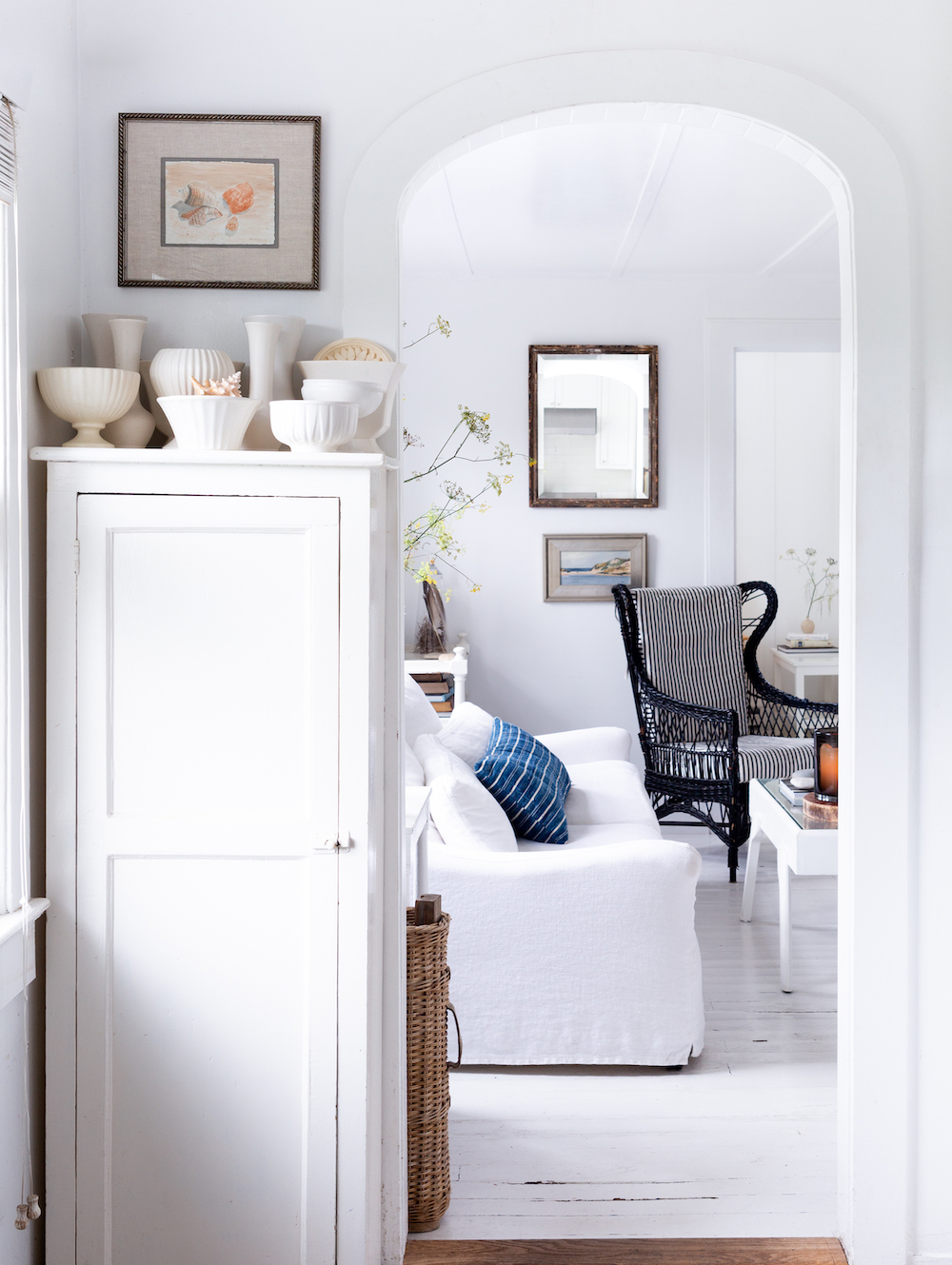
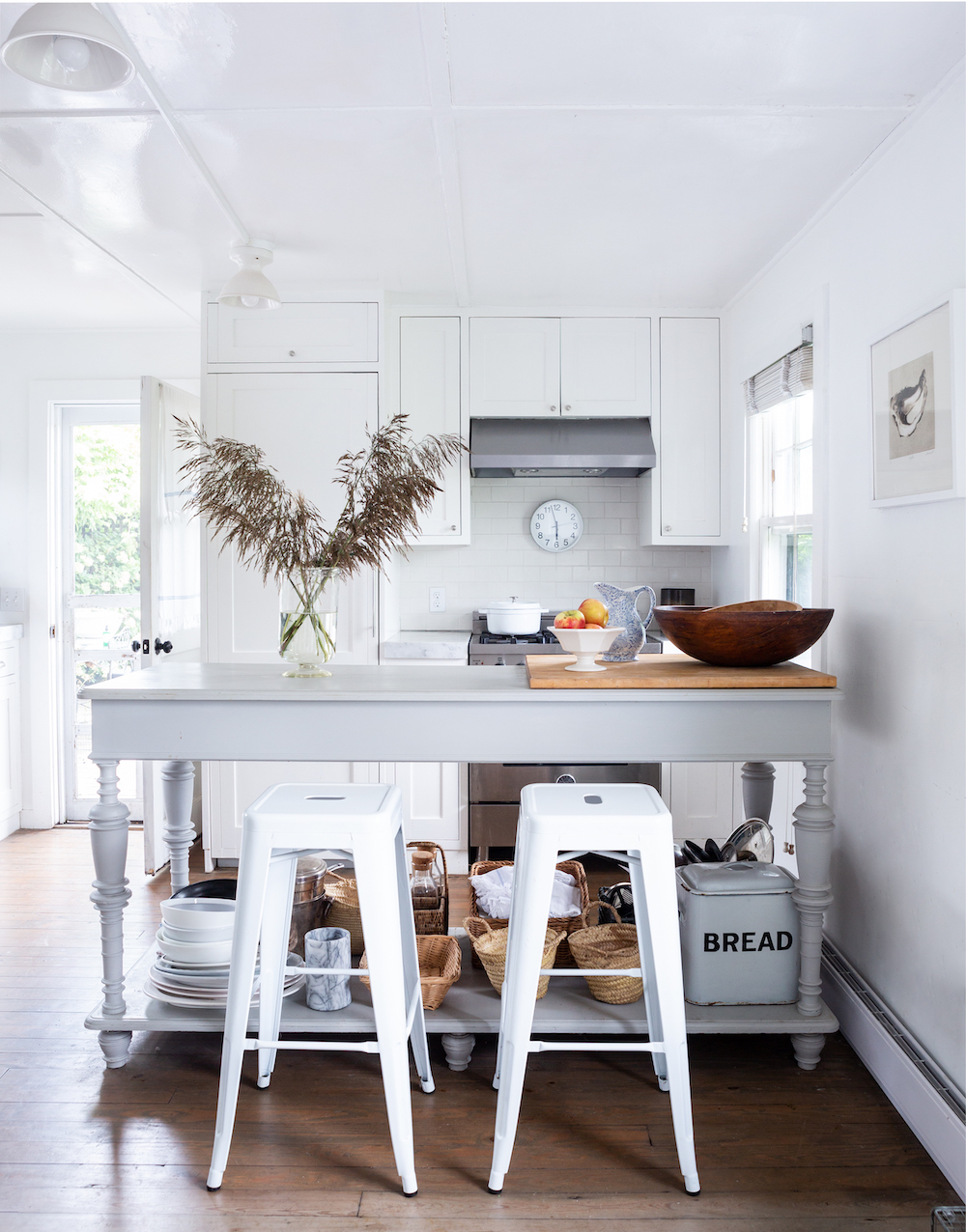
How do your landscape and surroundings play into your design inspiration?
It is everything – we painted the house all white to reflect the sun through out the day, and kept it simple to let the shadows do their thing on the walls. The house is filled with foraged collections of nature and flowers form my gardens.
Speaking of natural, foraged decor, tell us about Bloomist.
We are a nature-inspired home décor brand. We work with artisans, designer-makers and ethical suppliers around the world. We try to be as green as we can be – it’s a big challenge and we’re not pure but we are striving to do what we can. We only work with natural materials, and strive to find makers using sustainable processes and materials like organic wool, salvaged wood, stone and recycled glass. We like to say nature is our muse – we are a hybrid of content + commerce, using the platform to tell the story of inspiring makers, stylists and how-to tips covering topics from Foraging to How to Create an Inspiring Tableaux, or simply, How to Decorate with Cloches (preferably in recycled glass) – all in natural, textural materials. But we are just starting out, we want to be the best destination for all things to help you bring nature indoors, and we will grow over time. “A pot for every plant. A bottle for every branch.” Pots + planters, hanging, plant accessories and knowledgeable advice. And of course natural textiles, and botanicals; but unexpected botanicals like Cecropia leaves or Tumbleweed (inspired by one of our collaborators, Hilary Robertson.
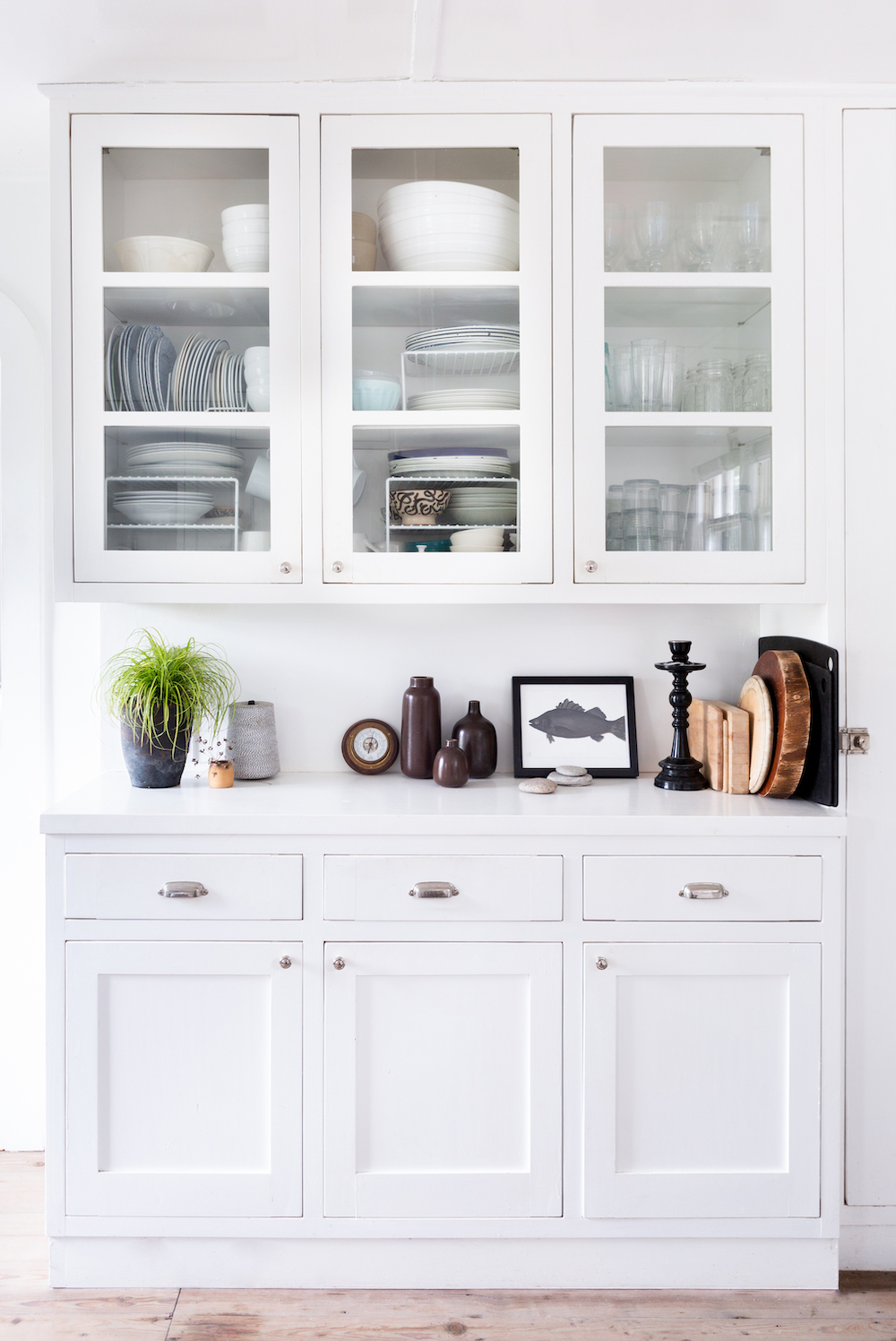
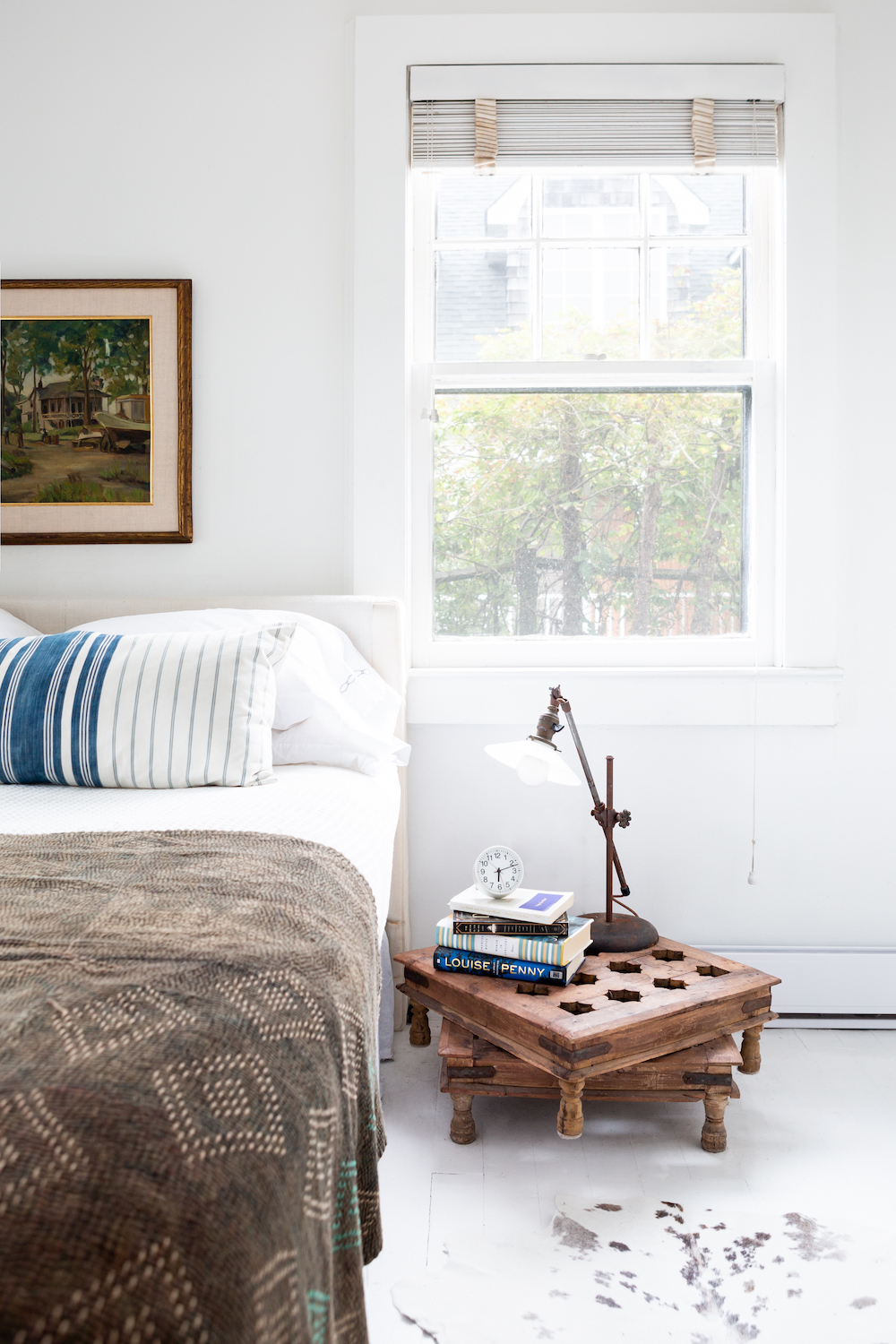
Did you run into any big design challenges for the space?
Storage. There are only tiny closets in 2 of the bedrooms – they didn’t need many clothes back in 1911. We have maximized the kitchen and have a small shed on the deck that doubles as a pantry + laundry room. We try to keep it simple like living on a boat – a place for everything and everything in its place. And everything does double duty – we store extra blankets and linens under the banquette on the front porch, and spill-over guests can sleep out there as well. We went thorough a massive de-clutter purge a couple years ago, but it is starting to slowly creep back in – an un-ending challenge.
Spill-over guests, ha! Is there any better kind?! Who are your dream house guests?
My family. When my sister+ her husband arrive, she is the only one who can kick my husband out of the kitchen and take over – usually arrives with more food and goodies and leaves a trail of happy, well fed people + changed beds in their wake. And they disappear to the beach all day while we are puttering in the garden. All guests need to be able to entertain themselves!
Describe your home in 5 words or less:
Cozy. Simple. Sun-drenched. Peaceful.
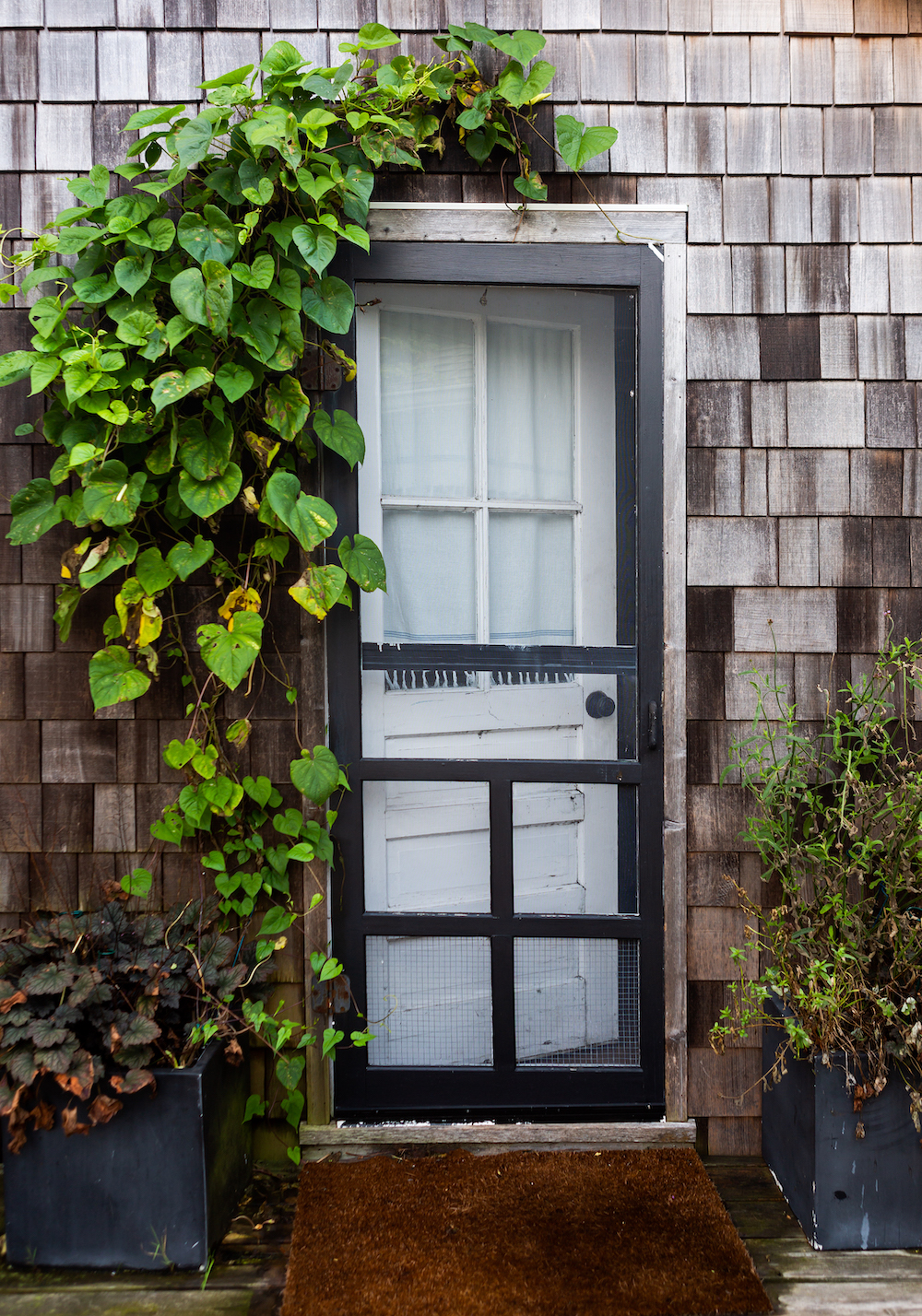
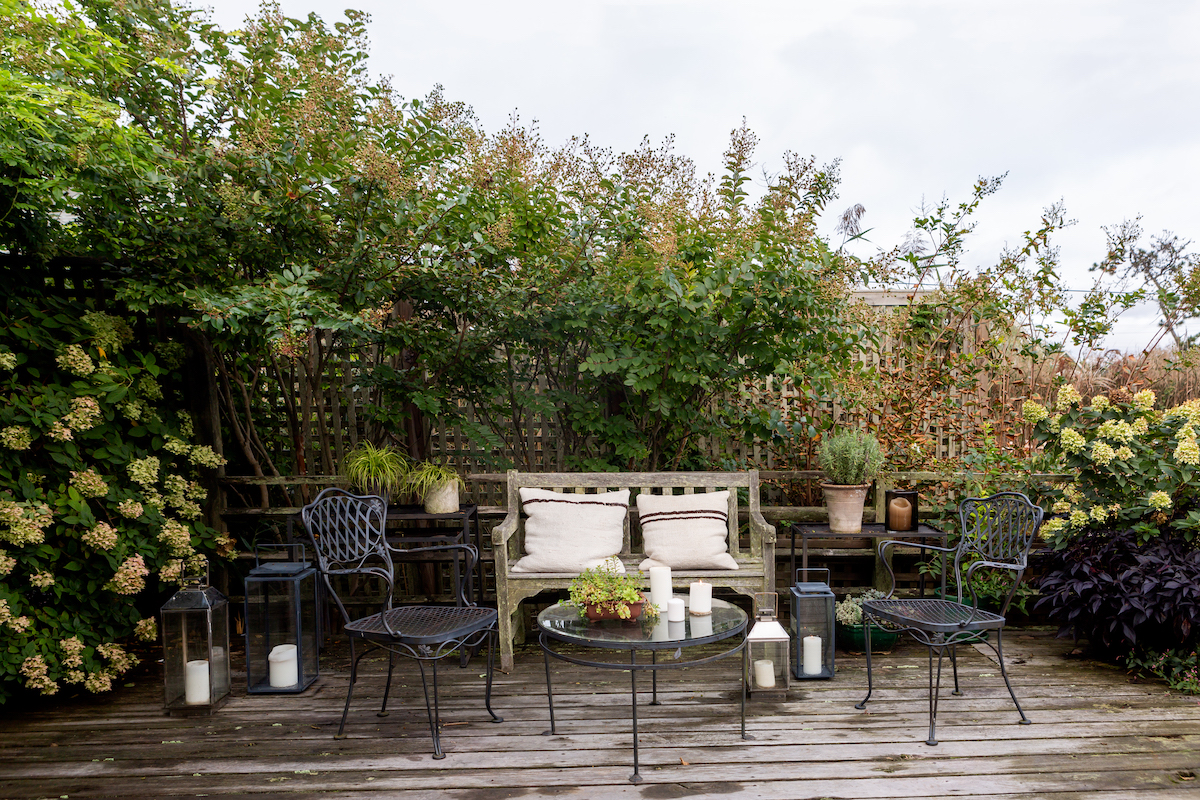
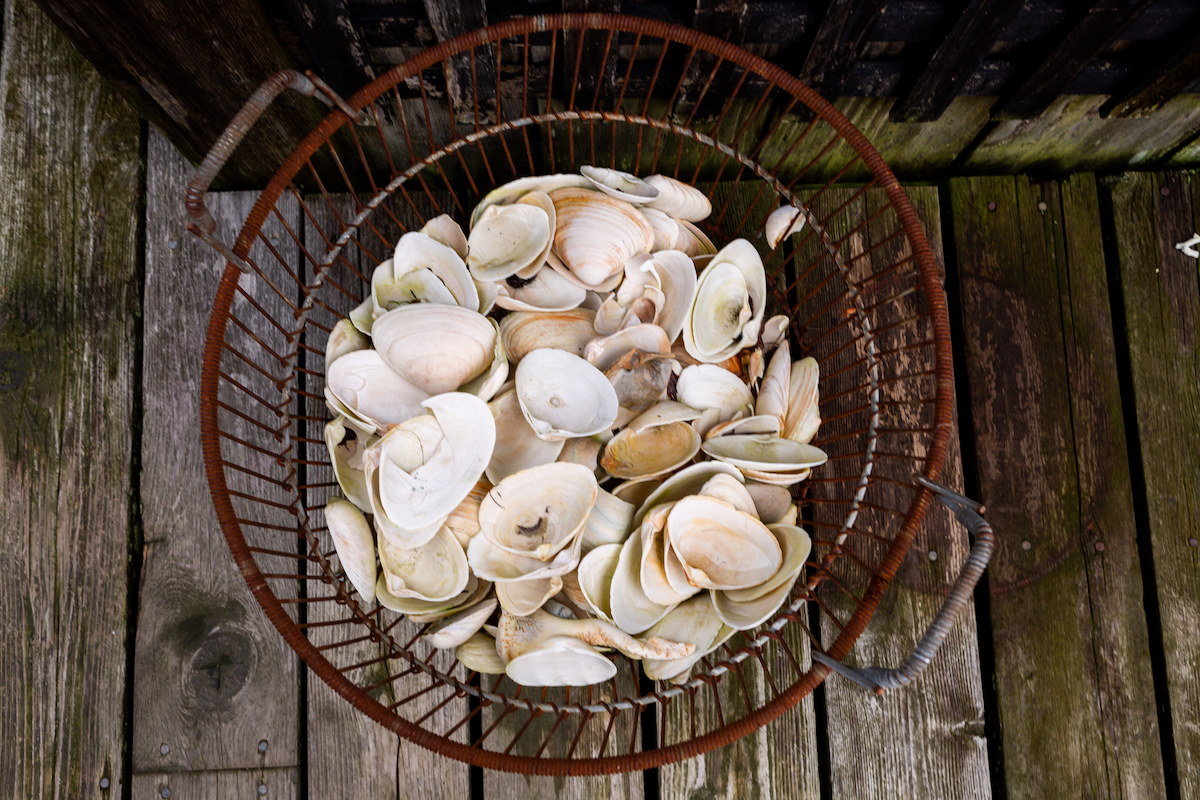

I am already madly in love with the few Bloomist pieces we have in my home. What are your hopes for the company?
We think people are craving to live life at a slower pace in a simpler, cozy environment, away from all the insanity in our current world, and they care about being conscious consumers. Home should be a refuge. There are many factors to think about in creating that refuge, in creating a considered home — it needs to be a sensorial experience, using natural materials like linen, organic wool, stone, woven grass rugs, with lots of natural light and windows that open. It needs to be a healthy home without toxins like plastics or VOC’s from flame retardant materials or synthetics in carpeting and upholstery. Bringing plant into the home makes people happy, and they also help clean the air for a healthy home. Considered accessories crafted by an artisan or a design-maker bring soul to a room and add dimension.
And sustainable design can be chic, it doesn’t have to be crunchy granola. Hopefully soon sustainable products will be the norm.
People value better quality materials and well-crafted pieces, but they also want to do what they can to help the environment or improve lives, whether it’s driving socio-economic growth for a small artisan village, or reducing the consumption of our natural resources. We love Vivienne Westwood’s quote “Buy less, choose well. Make it last. Quality, not quantity. “ We want to be that place you come to for inspiration, and all you need to create a natural, healthy home.
Bravo! And a refuge you have created, indeed! What’s your favorite way to spend time at home?
Gardening, beach walks, reading, and hanging with friends over impromptu cocktails or dinner.
Fill in the blank: A well-designed home should:
Reflect the owner, tell their personal story, and be decorated with collections, slowly over time. It should have lots of daylight and textures and all should feel welcomed and at-home there.
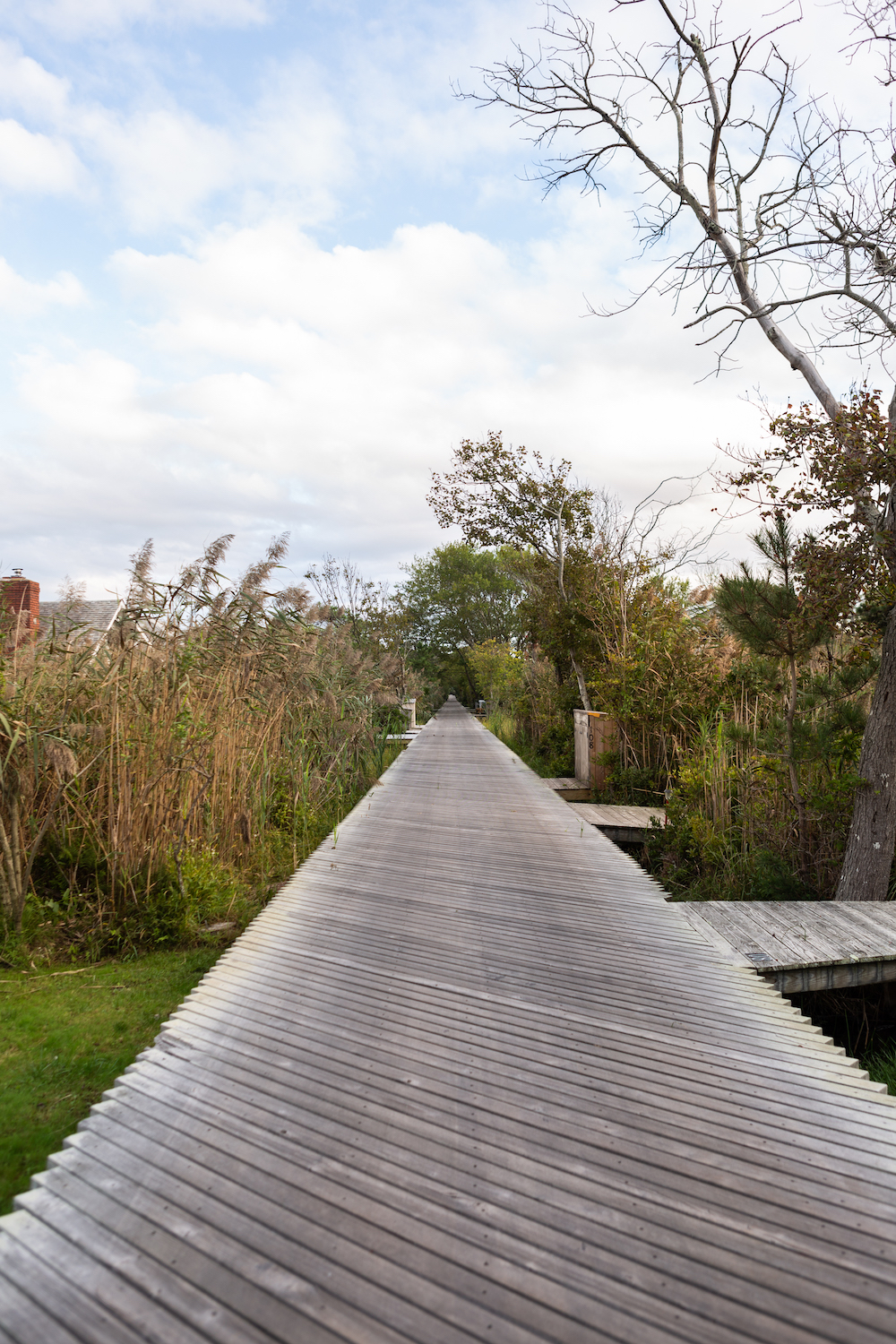
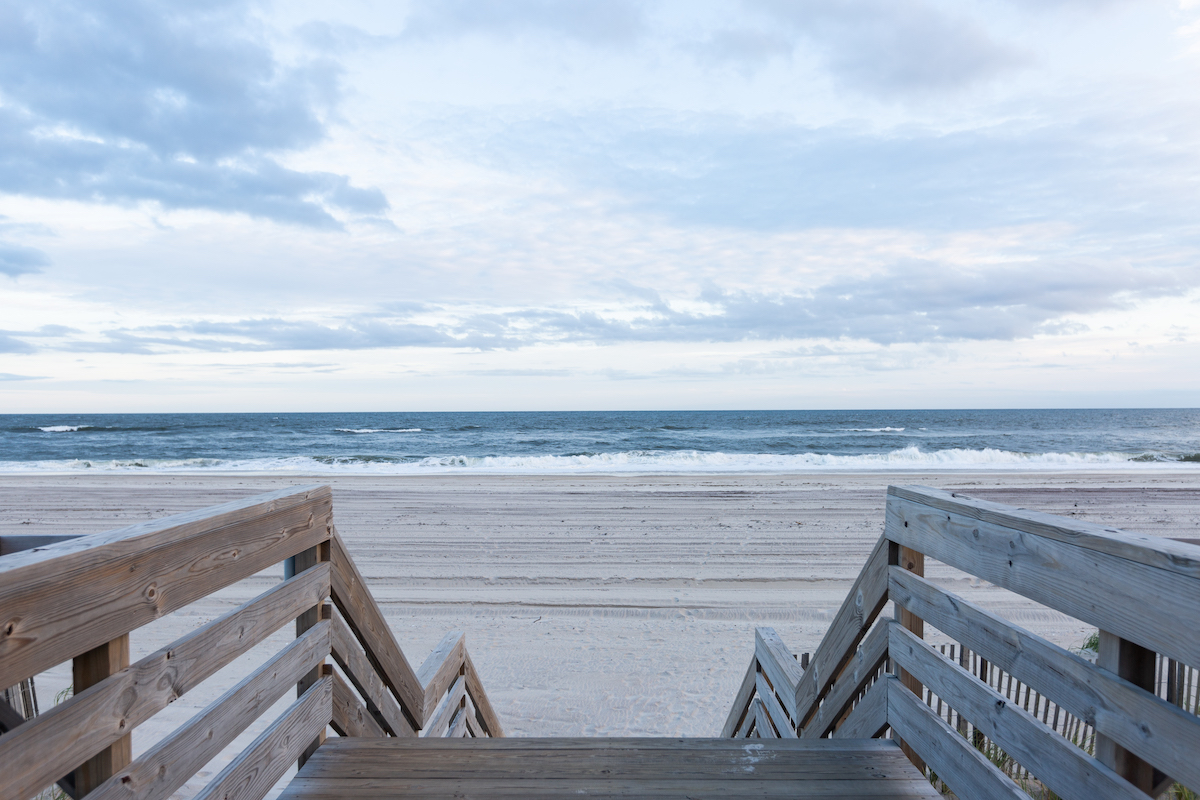


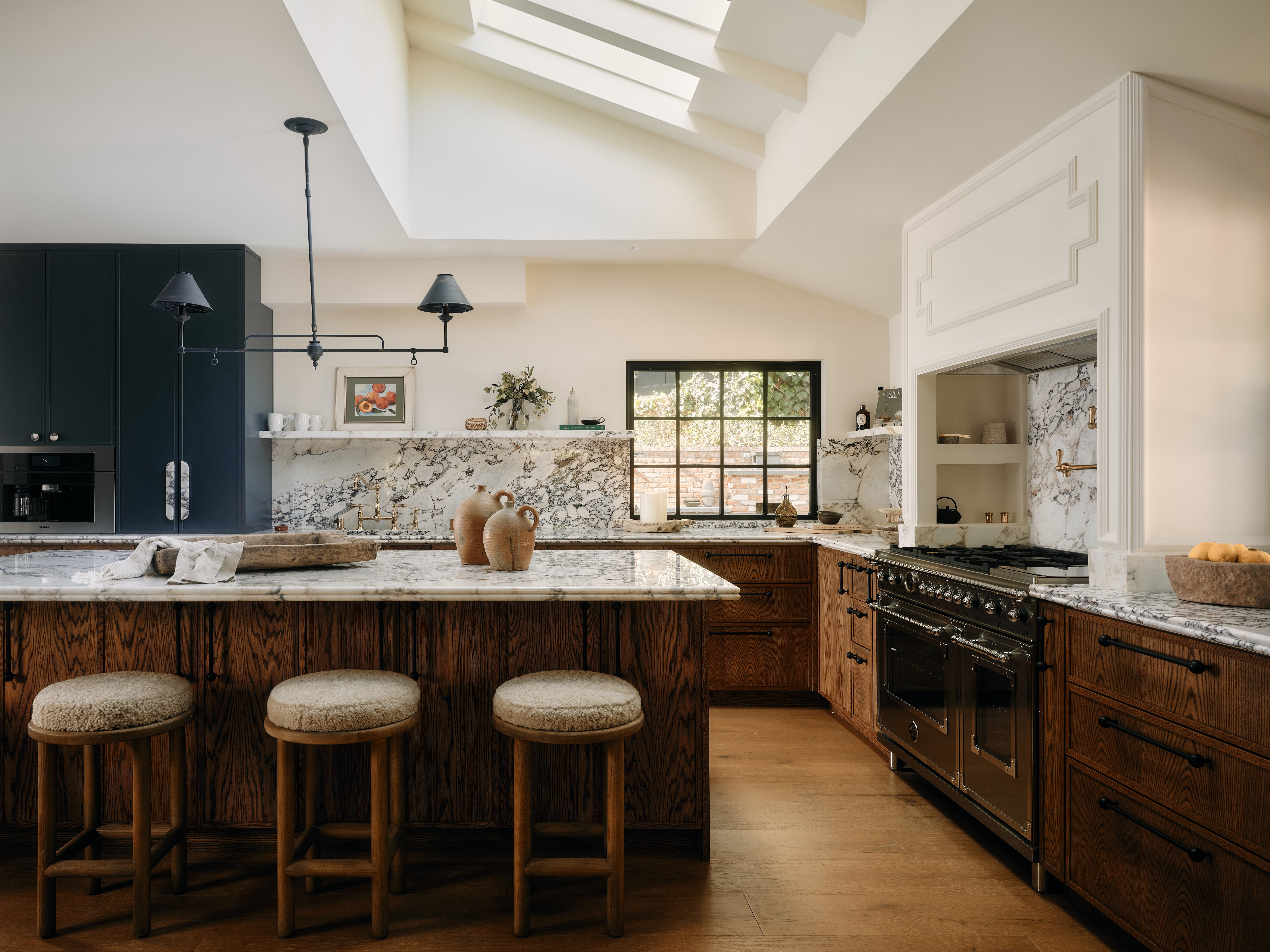
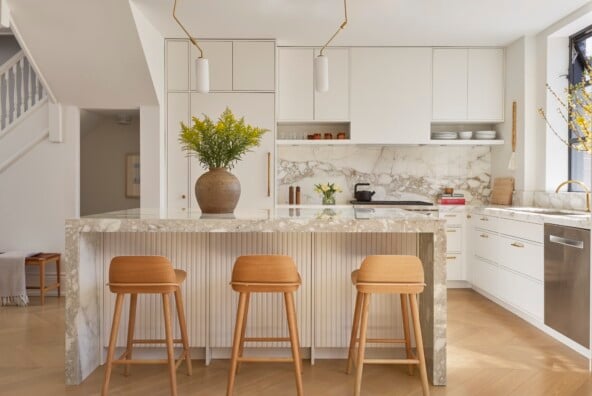
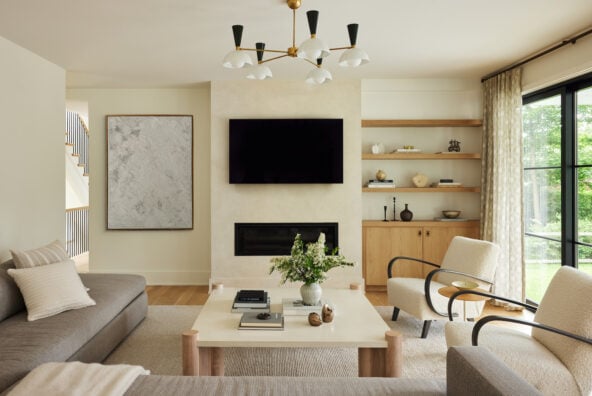
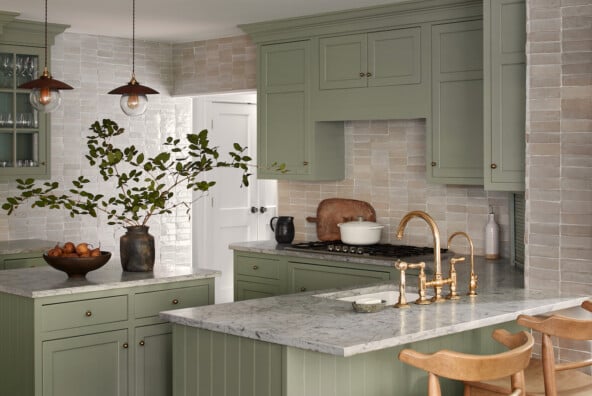
this house is a dream. I’m loving those dining chairs!
xo Jessica
My Style Vita